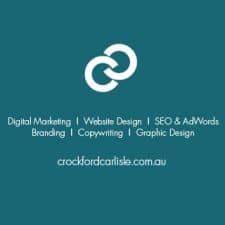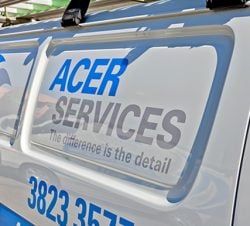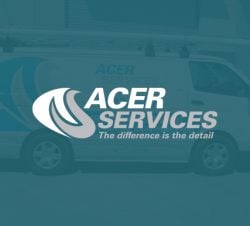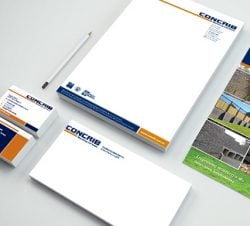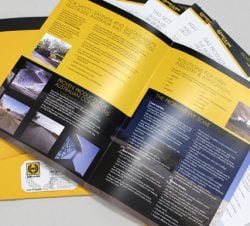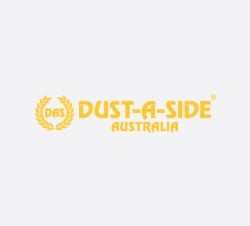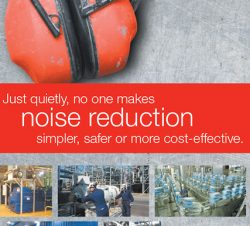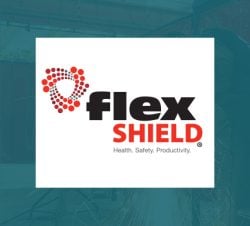It’s a question that has troubled mankind since the beginning of the world… wide web.
How long should my website blog content be?
- Should it be short and punchy?
- Long and highly detailed?
- Or maybe somewhere in between?
This is a very important question. Getting the right length of content on your website will influence the conversions of your site, and ultimately, how many leads you generate for your sales team each week.
So we’ll drill down into some detail for you in the article to give you some solid answers.
In overview, this article will give you:
- A quick, up front answer about how long website content should be.
- More detail about blog post length — with some ideas and examples.
- More detail about website page length — with some ideas and examples.
A quick answer about how long website content should be
After evaluating numerous data on the subject and looking at conversion rates, the web content writers at Crockford Carlisle believe we have come up with the definitive answer:
There are no ‘best answers’.
- Long content blog posts can work
- Short content blog posts can work.
- Long content website pages can work
- Short content website pages can work.
So there you have it.
If you are in a hurry and needed a quick answer about whether it is OK to write short or long website page or blog content, then right up front, just a few paragraphs into this article, you have the answer to your question. Yay!
There are some guidelines about website content length you must keep in mind
First up, what is the PURPOSE of your web content?
This depends on several factors, including who your audience is, where they are, what they do, how well they know/trust your company, what type of product or service you are offering, and more.
To figure out what is the purpose of each page on your website, let’s keep it simple and break our thinking into two types of content.
- Content for blog posts — Generally aimed at people who are early in the buying cycle, and who are still looking for big picture answers and figuring out how to solve their problem.
- Content for Product/Service pages — Generally aimed at people who are further down the sales funnel. They know how to solve their problem, and are now deciding whether your product/service is the one they want to buy.
To unpack these in more detail:
-
How long should a Blog Post be?
As we said above, blog posts are generally aimed at people who are early in the buying journey. If they are VERY early in the journey, they may not even realise that they need your help yet, or that your product or service has the answers they are looking for, and you’ll need to keep that in mind with your blog content.
For example:
Let’s say you are selling software that helps facility managers to track assets by GPS and automatically logs equipment usage. Your software means that facility managers no longer have to use paper, spreadsheets, abacuses, memory or other clunky solutions.
But let’s say your potential customer is still EARLY in the buying journey. We’ll call her “Rachel Researcher”. She is so early in her journey, that she might not yet know that a software option exists — and still thinks that she needs a “better spreadsheet”.
Rachel is searching for answers on “How to set up a spreadsheet to track equipment usage”.
In this situation, your blog post needs to have spreadsheet-related keywords that will enable her to find it in search, and then get some education and insights on how she can do things in a better way than using a spreadsheet by using software instead.
But here’s the thing…
To do this, you will probably need a substantial article, to be able to give Rachael the helpful, relevant insights she needs.
Otherwise, if it is too short/light, you’ll just annoy her with:
- Keywords about her problem just to ‘get her in’.
- A shallow, unhelpful ‘sales pitch’ article talking about software.
This will:
- Leave her with a feeling of ‘gotcha’
- Cause her to click away and bounce off your page, which
- Jeopardise your Google ranking in the future, and
- Do nothing to convert her and build a relationship.
In this instance, (to avoid all that grief, angst and misery), a detailed helpful blog post with rich content is appropriate. It will enable you to give deep insights, draw her across the gap between spreadsheets and the better option, and ensure that Rachel gets some value from this first interaction with your business.
From there, Rachel is more likely feel confident about:
- your brand
- engaging more with you, and
- investigating things further.
You have given her value from this interaction, she is likely to trust you, and will be more willing to complete a form on a landing page to obtain more information from you.
On the other hand, a short blog post can also work when…
You may have a different blog post that is aimed at people who are further down the buyer’s journey. Let’s call this persona “Neville Nearly There”. (Yair, I know… I’m stretching it a bit with that name. But it’ll do for the example)
Neville has already done the research that Rachel is doing. He already knows that he needs to get off spreadsheets and onto a software platform.
He is wondering if/how he can migrate his existing data when he goes to a software solution — without it being a huge nightmare of a job. And if your migration process is easy, you have a competitive advantage that you need Neville to know about.
In this case, you might be able to give him the answers in 350 to 500 words, which is just fine.
So long as he gets his answer and feels good about the experience with you, you will STILL be building trust — and Neville will be happy to engage further and obtain more information for you.
He will have a good user experience, and to Google that is far more important than copy length.
-
How long should a Web Page be?
The product/service pages on your website are generally aimed at potential customers who are well down the buying journey — perhaps further than Neville in our previous scenario.
We’ll call this person “Petunia Purchaser”. (Sigh.)
She has already:
- researched solutions to her problem, and
- figured out that your TYPE of product/service will do the job.
Now:
- She wants to see if YOUR particular product/service will do the job.
In this case, she needs facts, information, specifications and of course a CLEAR “next step”.
In this case, your page can be fairly succinct — with just enough information to answer Petunia’s questions and show her the specific benefits that your product/service offers.
If you DO need to use a lot of content, that’s fine — but make it interesting, engaging and easy to read, with sub heads, short paras and illustrations to help Petunia see the value in your offering when compared to your competitors.
So again, no ‘fixed’ rules. It still comes down to the individual job that the content of that individual page has to do.
So how do you REALLY know if your web page content is working?
The only way your website will be deemed a success is if enough people subsequently fulfil the goal, which might be to:
- Convert on an enquiry form,
- Call you,
- Visit your store,
- Sign on the dotted line,
- Add products to their shopping cart, or at the very least
- Subscribe to an offer so you can capture their contact details and add them to your mailing list.
And the only way they will do any of these things is if you convince them using just the right amount of copy.
You must also think of the ‘weight’ and trust of your brand
If you’re running a Subway store, your product pages would be easy – as the world’s largest franchise, you can assume that you’re a well-known, trusted brand so you’d only need to tell me what’s on the menu and maybe what your Specials are.
The rest of us aren’t so lucky – the less people know about you, the harder you have to work to win their trust.
This can be achieved via testimonials, endorsements, awards and accolades…anything that helps your customers-to-be familiarise themselves with you and make them feel more comfortable dealing with your company.
So if snippets of those (with a link to the full story) help your product pages, then they should be considered as part of the page content.
And the price of your offering is another consideration
I recently bought a $3 cable from e-Bay. I didn’t need to be convinced to buy it. I knew what I wanted (I was at the end of the Buyer’s Journey), I just checked that they were a trusted seller, and away I went. Kaa-Ching!
But if you are selling a high-value item or service, it stands to reason that you’ll need more page content to tell your value story. You must convince people that this is what they need and that it offers great value for money.
If your customers aren’t familiar with your products and fail to understand how they work and how they can be of use to them, the chances of them reaching for their fat wallets are very slim — unless you give them good reasons to do so.
Finally, write website content for your readers, not for your website
The bottom line is that content on your website isn’t for Google. It is for your readers. If you focus on them… on their situation… on their questions… then:
- Google will love you because you are giving people the answers they are searching for.
- Your customers will love you because you are giving them the answers they are searching for.
Yay!
So the big picture with all of this is to plan your website content strategy around the most important people in the world — your buyer personas.
Walk in their shoes.
Look at life thought their eyes.
Think about their stages in the buyer’s journey.
Write website content that will help them along the way — with the goal of them seeing the best value in YOUR solution rather than in your competitor’s sol ution when they reach decision time.
And that, dear reader, is the long and short of it.
To go full circle, as we said at the start, there are no fixed ‘rules’ for website content length. It is whatever works.
If you need assistance writing, reviewing or editing your blog or website copy, the team here at Crockford Carlisle are only too happy to help.
Simply call us on (07) 3891 3800 or get in touch with us here.









